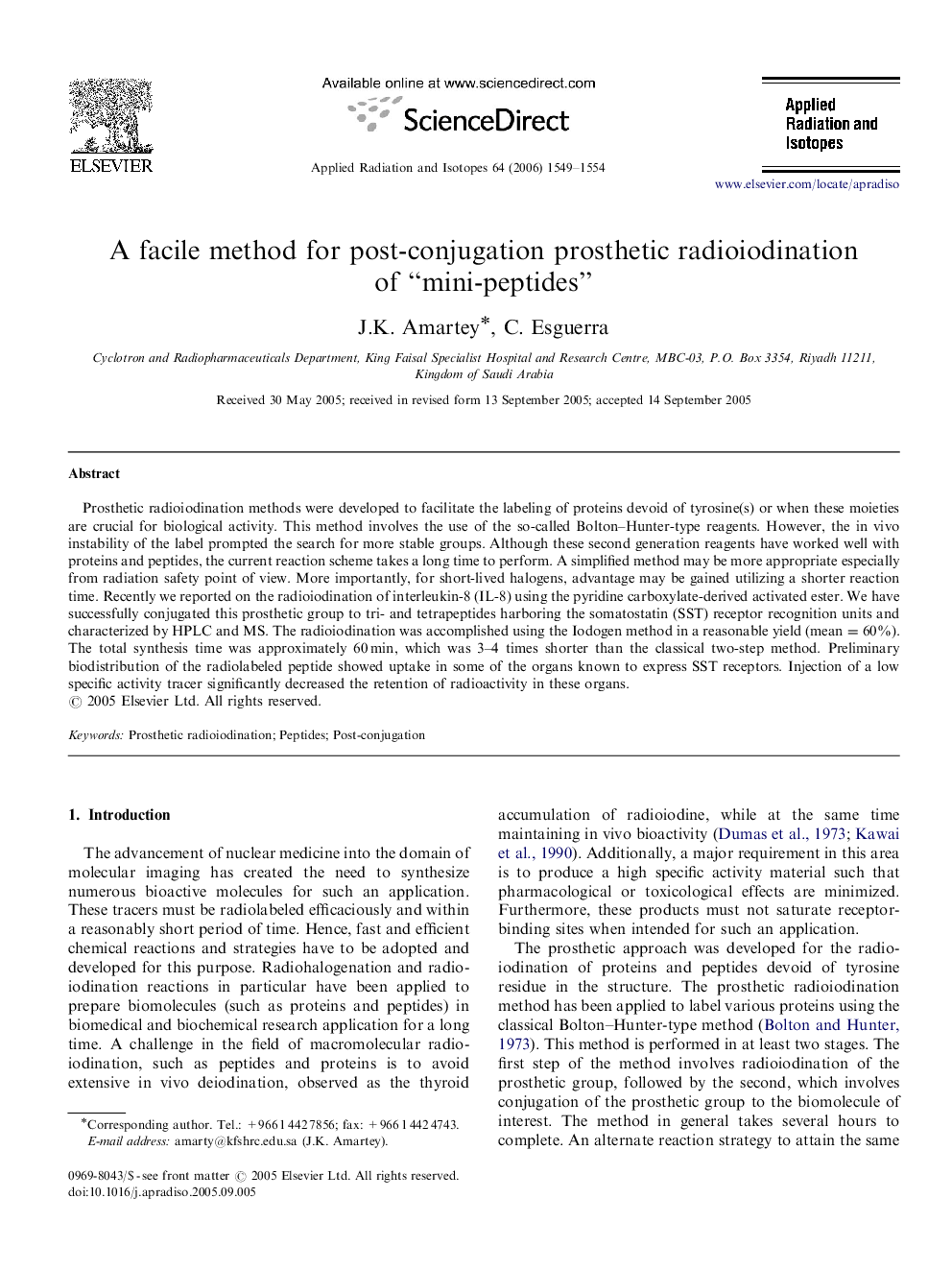| Article ID | Journal | Published Year | Pages | File Type |
|---|---|---|---|---|
| 1877410 | Applied Radiation and Isotopes | 2006 | 6 Pages |
Abstract
Prosthetic radioiodination methods were developed to facilitate the labeling of proteins devoid of tyrosine(s) or when these moieties are crucial for biological activity. This method involves the use of the so-called Bolton-Hunter-type reagents. However, the in vivo instability of the label prompted the search for more stable groups. Although these second generation reagents have worked well with proteins and peptides, the current reaction scheme takes a long time to perform. A simplified method may be more appropriate especially from radiation safety point of view. More importantly, for short-lived halogens, advantage may be gained utilizing a shorter reaction time. Recently we reported on the radioiodination of interleukin-8 (IL-8) using the pyridine carboxylate-derived activated ester. We have successfully conjugated this prosthetic group to tri- and tetrapeptides harboring the somatostatin (SST) receptor recognition units and characterized by HPLC and MS. The radioiodination was accomplished using the Iodogen method in a reasonable yield (mean=60%). The total synthesis time was approximately 60Â min, which was 3-4 times shorter than the classical two-step method. Preliminary biodistribution of the radiolabeled peptide showed uptake in some of the organs known to express SST receptors. Injection of a low specific activity tracer significantly decreased the retention of radioactivity in these organs.
Keywords
Related Topics
Physical Sciences and Engineering
Physics and Astronomy
Radiation
Authors
J.K. Amartey, C. Esguerra,
